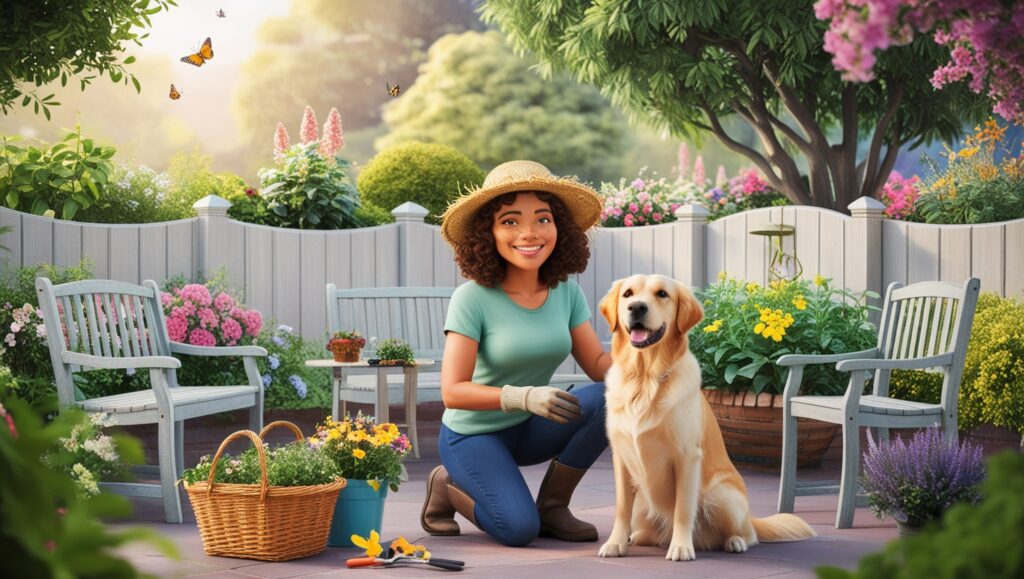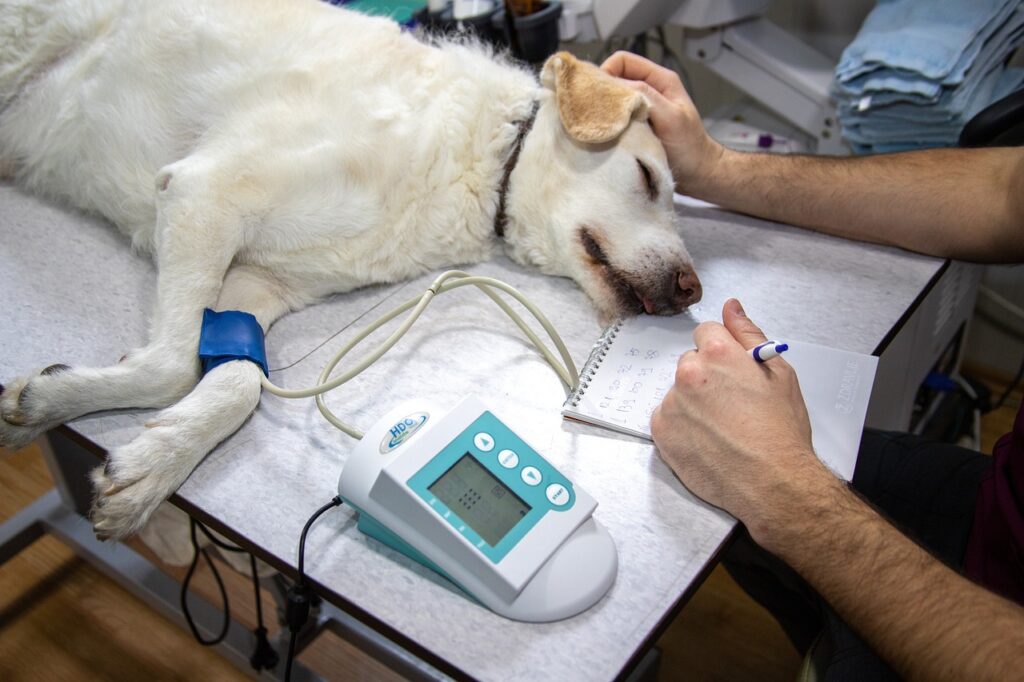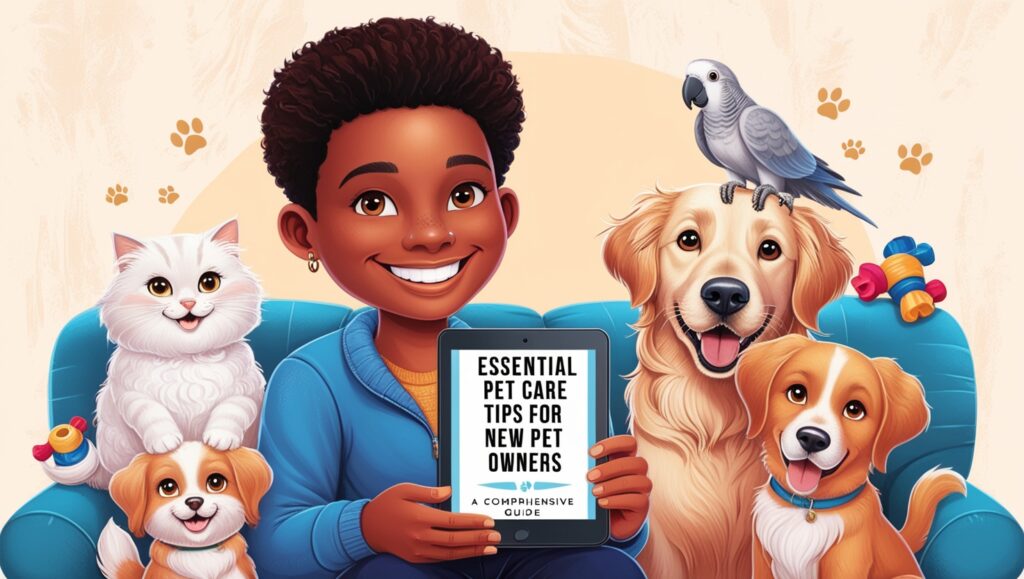As a pet owner and gardening enthusiast, you want to create an outdoor oasis that’s both beautiful and safe for your furry friends. In this comprehensive guide, we’ll explore pet-friendly gardening techniques, including safe plant choices, creative landscaping ideas, and effective pest control methods. By the end of this article, you’ll have all the knowledge you need to cultivate a stunning garden that you and your pets can enjoy together.
Introduction: Essential Pet-Friendly Gardening Tips
Pet-friendly gardening tips are crucial for animal lovers who want to create an outdoor oasis that’s both beautiful and safe for their furry friends. As a pet owner and gardening enthusiast, you understand the need to cultivate a space where your pets can roam freely without risk. This comprehensive guide explores pet-friendly gardening techniques, including safe plant choices, creative landscaping ideas, and effective pest control methods. By implementing these pet-friendly gardening tips, you’ll have all the knowledge needed to design a stunning garden that you and your pets can enjoy together.
Safe Plants: Key Pet-Friendly Gardening Tips for Plant Selection
One of the most critical pet-friendly gardening tips is choosing plants that won’t harm your furry companions if ingested. Here’s a list of some popular pet-safe plants to consider for your garden:
1. Pet-Safe Herbs for Your Garden
Many common herbs are safe for pets and can add both flavor to your cooking and beauty to your garden:
- Basil
- Rosemary
- Thyme
- Sage
- Mint (be cautious, as it can spread quickly)
2. Pet-Friendly Flowers to Brighten Your Space
Add a pop of color to your garden with these pet-friendly blooms:
- Sunflowers
- Marigolds
- Petunias
- Zinnias
- Snapdragons
3. Safe Ornamental Grasses for Pets
These low-maintenance plants can add texture and movement to your garden:
- Feather Reed Grass
- Blue Oat Grass
- Japanese Forest Grass
4. Pet-Safe Fruits and Vegetables
Many edible plants are safe for pets, allowing you to grow your own produce without worry:
- Strawberries
- Blueberries
- Cherry tomatoes
- Carrots
- Cucumbers
5. Pet-Friendly Trees and Shrubs
For larger landscaping elements, consider these pet-safe options:
- Magnolia
- Camellia
- Butterfly Bush
- Crepe Myrtle
Remember, while these plants are generally considered safe, it’s always best to discourage your pets from eating any plants in large quantities. Individual animals may have different sensitivities, so always monitor your pets when introducing new plants to your garden.
Plants to Avoid: Crucial Pet-Friendly Gardening Tips
Just as important as knowing which plants are safe is understanding which ones to avoid. Some common garden plants that can be toxic to pets include:
- Lilies (especially toxic to cats)
- Azaleas and Rhododendrons
- Oleander
- Sago Palm
- Tulips and Daffodils
If you’re unsure about a particular plant, consult the ASPCA’s comprehensive list of toxic and non-toxic plants before adding it to your garden.
Pet-Friendly Landscaping Ideas: Tips for a Safe Outdoor Space
Creating a pet-friendly garden goes beyond plant selection. Here are some landscaping ideas to make your outdoor space both beautiful and functional for your furry friends:
1. Designated Play Areas for Pets
Set aside a specific area of your garden for pet play. This could include:
- A sandbox for digging (especially appealing to dogs)
- Open grassy areas for running and fetching
- Climbing structures or cat trees for feline friends
2. Pet-Safe Pathways in Your Garden
Create clear pathways through your garden using pet-friendly materials:
- Smooth pebbles or river rocks (avoid sharp edges)
- Flagstones with pet-safe ground cover between them
- Mulch made from pet-safe materials like cedar or pine
3. Shade and Shelter: Comfort Tips for Pets
Provide comfortable spots for your pets to rest and escape the elements:
- Plant trees or install shade sails for natural cooling
- Create cozy hideaways with pet-sized structures or dense shrubs
- Include a shallow water feature for drinking and cooling off
4. Secure Boundaries: Pet-Friendly Fencing Tips
Ensure your garden is escape-proof and safe:
- Install sturdy fencing without gaps that pets can squeeze through
- Use chicken wire or hardware cloth to secure the bottom of fences for diggers
- Consider planting dense hedges as natural barriers
5. Raised Beds: Gardening Tips to Protect Plants from Pets
Protect your prized plants and give your pets freedom to roam:
- Use raised beds or containers for delicate plants or vegetables
- Create vertical gardens to maximize space and keep plants out of reach
Effective and Pet-Safe Pest Control Tips
Maintaining a healthy garden often means dealing with pests, but it’s crucial to use methods that won’t harm your pets. Here are some pet-friendly pest control strategies:
1. Natural Predators
Encourage beneficial insects and animals that prey on common garden pests:
-
- Install bird feeders and baths to attract insect-eating birds
-
- Create habitats for beneficial insects like ladybugs and praying mantises
-
- Consider introducing nematodes to control soil-dwelling pests
2. Physical Barriers
Use non-toxic methods to keep pests away from your plants:
-
- Place copper tape around planters to deter slugs and snails
-
- Use row covers or netting to protect plants from insects and animals
-
- Install motion-activated sprinklers to scare away larger pests
3. Companion Planting
strategically plant pest-repelling plants throughout your garden:
-
- Marigolds to deter aphids and nematodes
-
- Lavender to repel fleas and moths
-
- Chrysanthemums to ward off roaches and ants
4. Homemade Pest Sprays
Create your own pet-safe pest control solutions:
-
- Mix water and mild dish soap to combat soft-bodied insects
-
- Use a solution of water and neem oil for a natural insecticide
-
- Create a garlic and hot pepper spray to deter a variety of pests
5. Maintenance and Prevention
Regular garden care can prevent many pest problems:
-
- Remove dead or diseased plant material promptly
-
- Keep your garden well-watered and mulched
-
- Rotate crops in vegetable gardens to disrupt pest cycles
Remember, even natural pest control methods should be used cautiously around pets. Always supervise your animals in the garden and store any treatments safely out of reach.
Conclusion: Enjoying Your Pet-Friendly Garden
Creating a pet-friendly garden doesn’t mean sacrificing beauty or functionality. By choosing safe plants, implementing thoughtful landscaping ideas, and using pet-safe pest control methods, you can cultivate an outdoor space that’s enjoyable for both you and your furry companions.
Remember, every pet is unique, so always observe how your animals interact with new plants or garden features. With a little planning and creativity, your pet-friendly garden can become a safe haven where the whole family can relax, play, and connect with nature.
Whether you’re a seasoned gardener or just starting out, the journey to creating a pet-friendly outdoor space is rewarding and fun. So grab your gardening gloves, call your furry friends, and start transforming your yard into a pet paradise today!
By following these guidelines and tips, you’ll be well on your way to creating a beautiful, thriving garden that’s safe for your beloved pets. Happy gardening!



